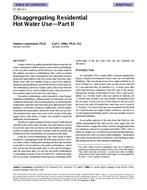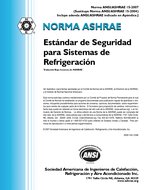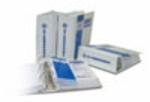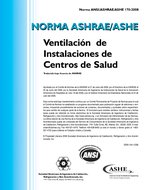Description
A major obstacle to gathering detailed data on end-use hot water consumption within residences and commercial buildings is the cost and complexity of the field tests. An earlier study by the authors presented a methodology that could accurately disaggregate hot water consumption into individual end-uses using only information on the flow of hot water from the water heater. Since only one channel of data is used in the analysis, hardware and installation costs for the field test can be kept low. The methodology, however, requires data collected at intervals of one minute or less, and it is limited to sites where all end-uses have distinct patterns for their hot water draws.
The earlier methodology can be extended to a much larger population of buildings, without greatly increasing the cost and complexity of the data collection and analysis, by monitoring the temperature of the hot water lines that go to different parts of the building. For the three residences studied here, thermocouples monitored the temperatures of four hot water lines at each site. The monitored hot water lines were in the vicinity of the data logger and so only about 1.5 hours were needed to install the additional instrumentation.
The thermocouple readings provide a positive indication of when hot water starts to flow in a line. Since the end-uses served by each hot water line are known, the uncertainty in assigning a draw to a particular end-use is greatly reduced. Benefits and limitations for the methodology are discussed in the paper.
Using the revised methodology, hot water usage in three residences is disaggregated into the following end-uses: showers, baths, clothes washing, dishwashing, kitchen sink, and bathroom sink. For two residences, the earlier methodology–which does not use the thermocouple data–is also used to disaggregate the same draw data. For one site, the earlier methodology is reasonably accurate (errors less than 10%), and for the other, it is less accurate. Methods for reducing errors when data on the temperature of the hot water lines are not available are discussed.
Units: I-P
Citation: Symposium, ASHRAE Transactions, 1998, Vol 104, pt. 1A, San Francisco
Product Details
- Published:
- 1998
- Number of Pages:
- 12
- File Size:
- 1 file , 270 KB
- Product Code(s):
- D-7957




